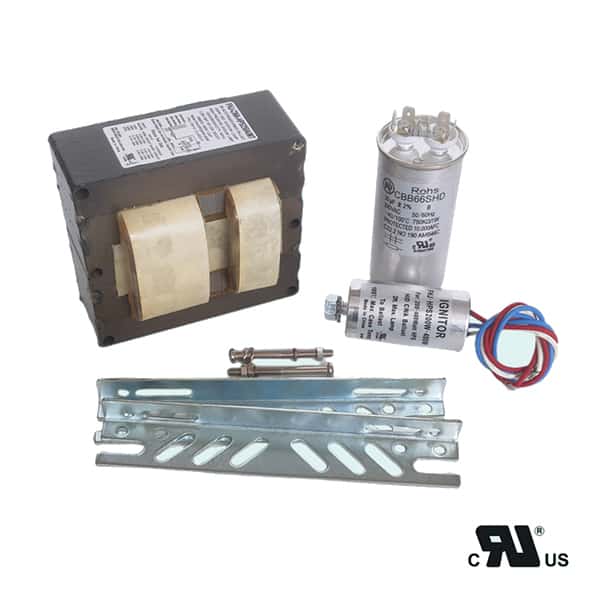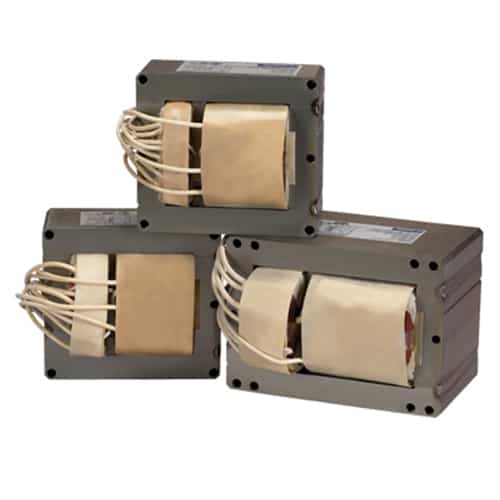Using the wrong wattage for the High-Pressure Sodium bulbs and ballasts can cause them to operate inefficiently or be unsafe. The solution is to match the right ballast with the bulb wattage for the best performance.
You should not use a 400w HPS bulb on a 1000w ballast. This mismatch can cause the bulb to overheat and fail early, which can damage the bulb and the ballast.
Let’s dive into why you need to match the right ballast and bulb wattage.
How Much Area Does a 400-Watt HPS Cover?
A 400-watt HPS (High-Pressure Sodium) bulb is commonly used for indoor plant growing, especially during the flowering stage. On average, a 400w HPS can cover an area of approximately 4 to 6 square feet. This range can vary depending on factors such as reflector type, light positioning, and plant density. The light intensity provided by a 400w HPS is optimal for plants needing medium light exposure.
The bulb emits about 50,000 lumens, making it ideal for growing medium-sized plants or for smaller grow spaces. To maximize efficiency, ensure the light is evenly distributed across the coverage area.
How Long Does a 400w HPS Bulb Last?
On average, a 400w HPS bulb has a lifespan of about 24,000 hours. However, it’s important to note that the light intensity and efficiency will degrade over time. After approximately 18,000 hours of use, the light output can drop by as much as 30%, meaning it’s crucial to monitor the performance and replace the bulb accordingly to ensure healthy plant growth.
Regular maintenance, such as cleaning reflectors and checking the ballast, can help prolong the life of the bulb and ensure optimal performance throughout its usage period.
How Far Should 400w HPS Be from Plants?
The optimal distance between a 400w HPS bulb and plants typically ranges from 12 to 24 inches, depending on the growth stage of the plants. In the vegetative stage, the light should be closer (around 12 inches), while during the flowering stage, you can increase the distance slightly to avoid light stress on the plants.
Always ensure the light is not too close, as it can cause leaf burn, or too far, which can result in leggy plants due to insufficient light intensity.
How Much Power Does a 400w HPS Use?
A 400w HPS light consumes approximately 400 watts of power, though the actual consumption may be slightly higher when accounting for the ballast. If run for 12 hours a day, the power consumption would be about 4.8 kilowatt-hours (kWh) daily. Over a month, this would amount to around 144 kWh, making it important to factor in electricity costs when planning your grow operation.
Energy-efficient ballasts can help reduce this consumption, ensuring the most efficient use of power without compromising the light’s effectiveness.
What Is a 1000W Ballast?
A 1000w ballast is an electrical device that regulates the power supply to a 1000-watt High-Pressure Sodium or Metal Halide bulb. The ballast ensures the correct voltage and current are supplied to the bulb to ignite and maintain steady operation. Different types of ballasts, such as magnetic or electronic, are available, with electronic ballasts being more efficient and producing less heat compared to magnetic ones.
Using the correct ballast for your bulb is essential for optimal performance and safety, as mismatched wattages can cause serious issues like overheating and reduced efficiency.
Is 1000W HPS Better Than LED Grow?
Comparing a 1000w HPS to LED grow lights depends on the specific grow setup and goals. While a 1000w HPS light emits a high amount of lumens, making it ideal for large grow spaces, LED grow lights are more energy-efficient and offer more control over the light spectrum. LEDs produce less heat, reducing the need for extensive cooling systems, which can be a significant advantage in indoor growing.
However, HPS lights are still favored for their intensity and effectiveness during the flowering stage, providing plants with the red spectrum they need for robust growth.
How Far Should a 1000-Watt HPS Light Be from Plants?
A 1000-watt HPS light should be positioned 24 to 36 inches away from the plant canopy to avoid heat stress and light burn. As plants grow and require more light intensity, you can adjust the distance accordingly. However, always monitor your plants closely for signs of stress, such as yellowing or burned leaves, which indicate that the light may be too close.
Proper light positioning ensures that plants receive adequate light for photosynthesis without being subjected to harmful heat.
Do HPS Bulbs Need Ballast?
Yes, HPS bulbs require a ballast to operate. The ballast provides the initial high voltage to ignite the gas in the bulb and then regulates the current during operation. Without a ballast, the bulb would either not start or burn out rapidly due to unregulated current. Both magnetic and electronic ballasts are used with HPS bulbs, though electronic versions are more energy-efficient and produce less heat.
How Many Lumens Does a 400W HPS Produce?
A 400-watt HPS bulb typically produces around 50,000 lumens. This high lumen output makes it ideal for indoor plant growing, particularly in the flowering stage, as it provides the necessary light intensity to support healthy plant growth. The efficient light distribution also makes it a popular choice among growers with smaller grow spaces.
However, as the bulb ages, lumen output decreases, which is why it’s important to replace it after a certain period to maintain optimal growth conditions.
Can You Use a 400w Bulb with a 600w Ballast?
Using a 400w bulb with a 600w ballast is not recommended, as it can damage both the bulb and the ballast. The mismatched wattage can cause the bulb to overheat, leading to reduced lifespan or even immediate failure. Additionally, the ballast may not function efficiently, resulting in poor lighting performance and wasted energy.
Always match the bulb wattage to the ballast for optimal performance and safety.
How Many Watts Does a 600w HPS Use?
A 600w HPS bulb consumes approximately 600 watts of power, though, like a 400w HPS, the actual power draw may be slightly higher when factoring in the ballast. Over the course of a 12-hour day, it would use around 7.2 kWh of energy, amounting to 216 kWh per month. This higher power consumption is important to consider, particularly in large grow setups, where energy efficiency becomes critical.
Summary:
Matching the right wattage between the HPS bulbs and ballasts makes them work the best and be the safest.




